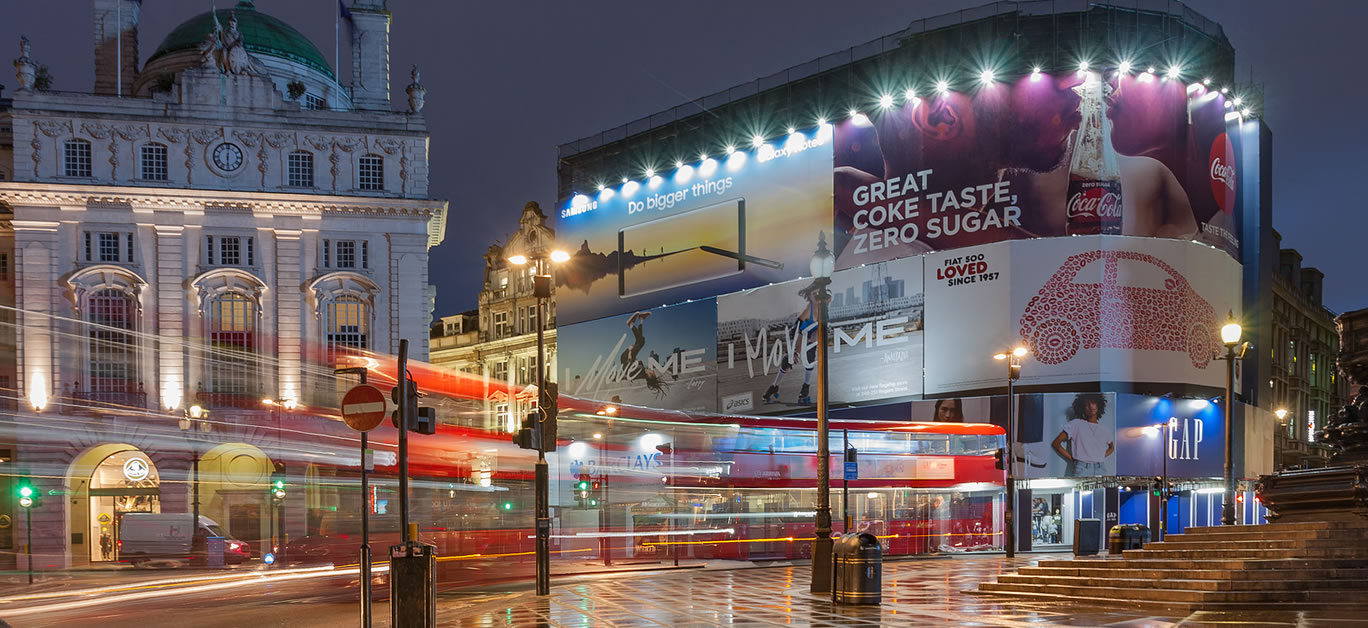Throughout human history, there has never been more competition for our attention than right now. Incredible developments in technology, analytics and artificial intelligence ensure that from dawn until dusk, companies and brands are battling for our attention in both the digital and physical sphere.
According to studies carried out by digital marketing experts in the United States, the average American citizen is bombarded by somewhere between 4,000 and 10,000 advertisements every single day. A staggering statistic., and what does that mean for the way we engage with commercial content?
We all want to believe that we are smart enough to notice when we’re being targeted by advertising, and its prevalence certainly makes it easier to spot. With that in mind, advertisers must continue to find cost-effective ways to place their brands in front of great swathes of prospective customers. While digital marketing and Big Data have reinvented the online space, there is sometimes no substitute for the physical marketing. Which is why the traditional billboard, reinvented through cutting-edge digital signage solutions like those provided by LOOK DC, is enjoying a modern-day resurgence.
Locations of huge footfall, as well as cultural and artistic landmarks, are beginning to utilise digital signage to their fullest potential. We take a look at five interesting, iconic, and breath-taking uses of the technology to whet your appetite for all things digital signage.
Mercedes Benz Stadium, Georgia, USA
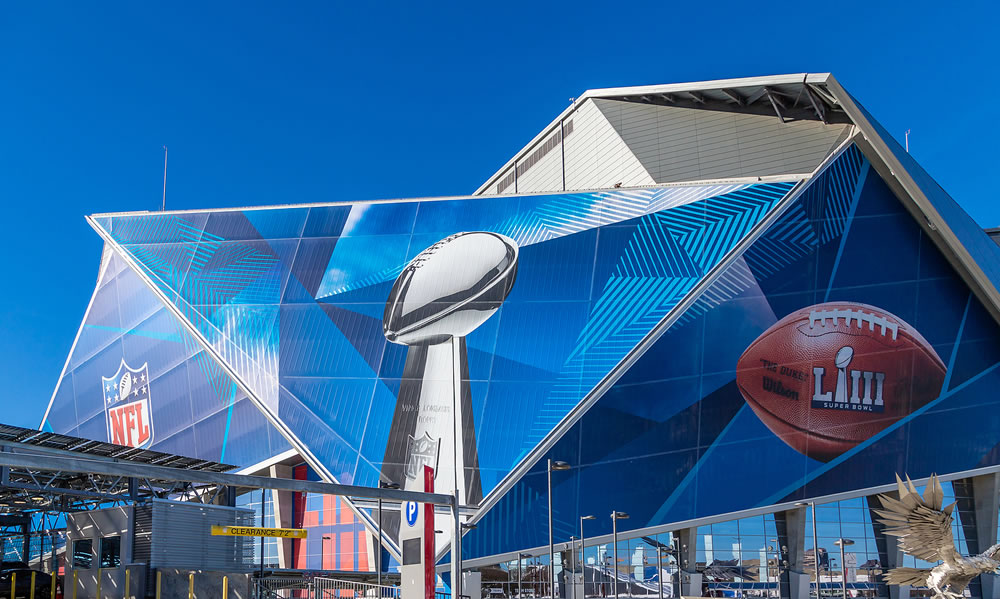
The $1.6bn stadium in the heart of Atlanta, Georgia has laid claim to the largest videoboard in professional sport around the world. The stadium, which is the home of the Atlanta Falcons NFL franchise, as well as Atlanta United in the MLS, boasts a 58-feet tall, 63,000 square-feet digital board under its roof, which runs circular around the stadium, thus gaining the nickname of ‘halo board.’
The digital installation allows for 360-degree viewing, including live action, match highlights, and iso-camera footage. The megascreen is backed up by over 2,000 television screens dotted around the concourses, food and beverage zones, and hospitality areas inside the arena.
Meydan Racecourse, Dubai, United Arab Emirates
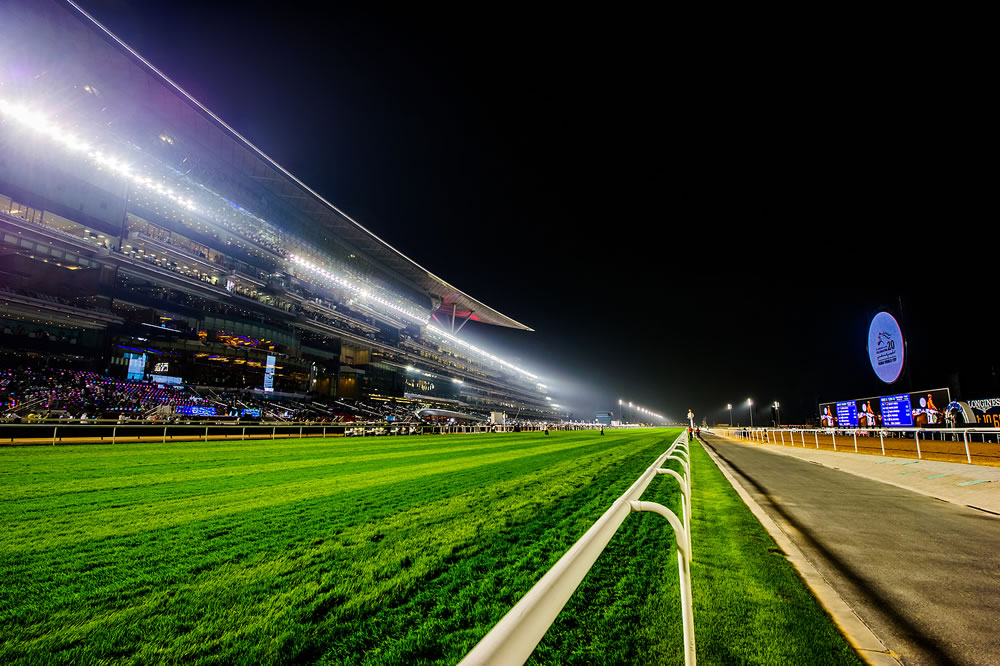
The luxury racecourse in the UAE laid claim, at one time, to being the largest spectator racecourse in the world, with a capacity of nearly 70,000. The logic follows, then, that a footfall of that magnitude needs a video screen solution to match – which is why the Dubai racecourse installed a Sojitz and Mitsubishi Electric Diamond Vision screen, with no expense spared. The screen spans an entire side of the racecourse, bathing it in high-definition picture, courtesy of over 12 million luminescent LEDs.
Plaza del Callao, Madrid
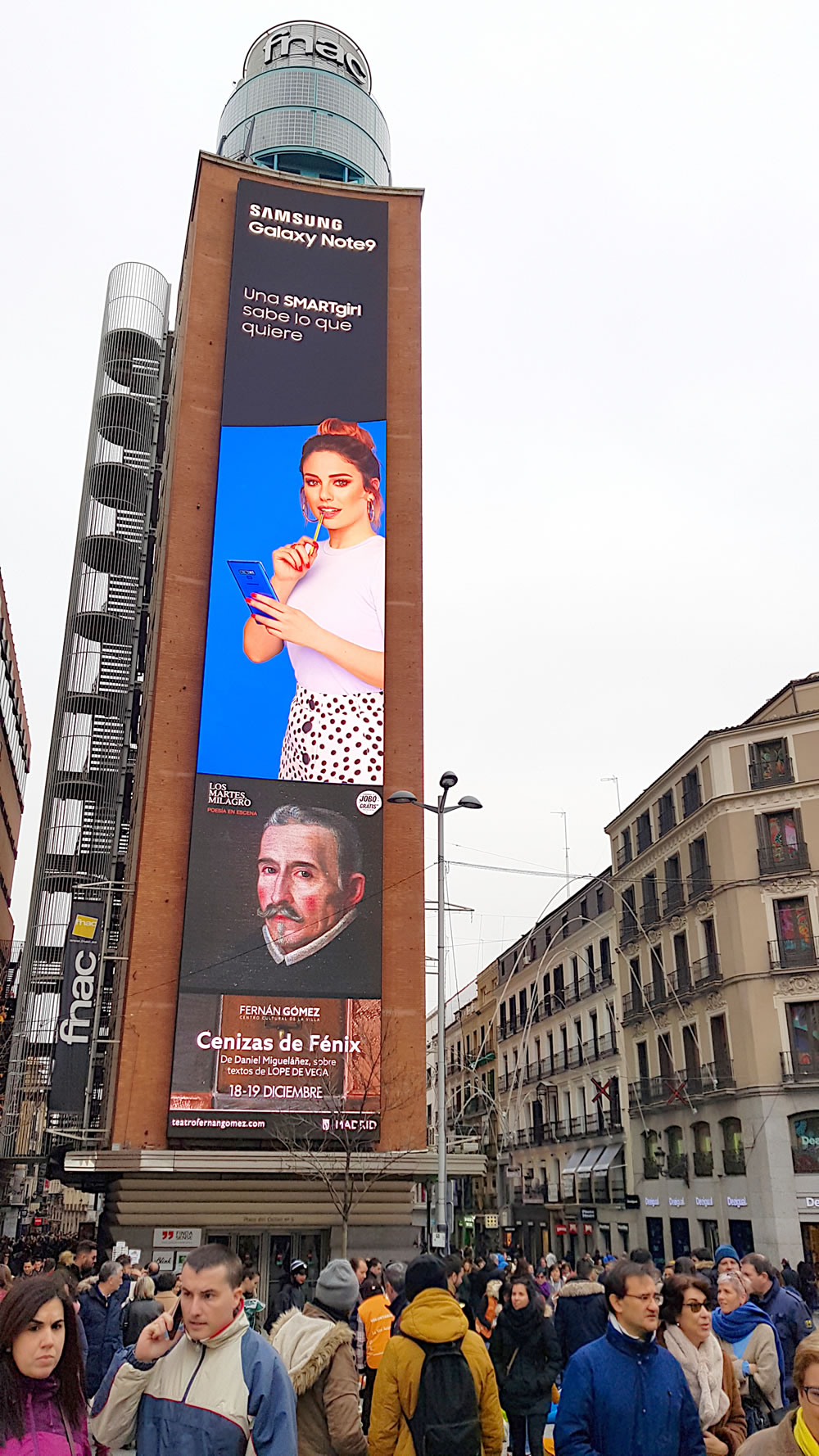
Digital signage was introduced to the Callao Square during a modernisation project for the heart of Madrid, and the results are spectacular. Standing against the tradition and grandeur of the Spanish capital, the whopping LED installation provides breath-taking contrast with the city’s traditional commerce and retail architecture. The installation is a sure-fire hit for advertisers, with over 100 million people setting foot in the Plaza del Callao every single year.
Piccadilly Circus, London, United Kingdom
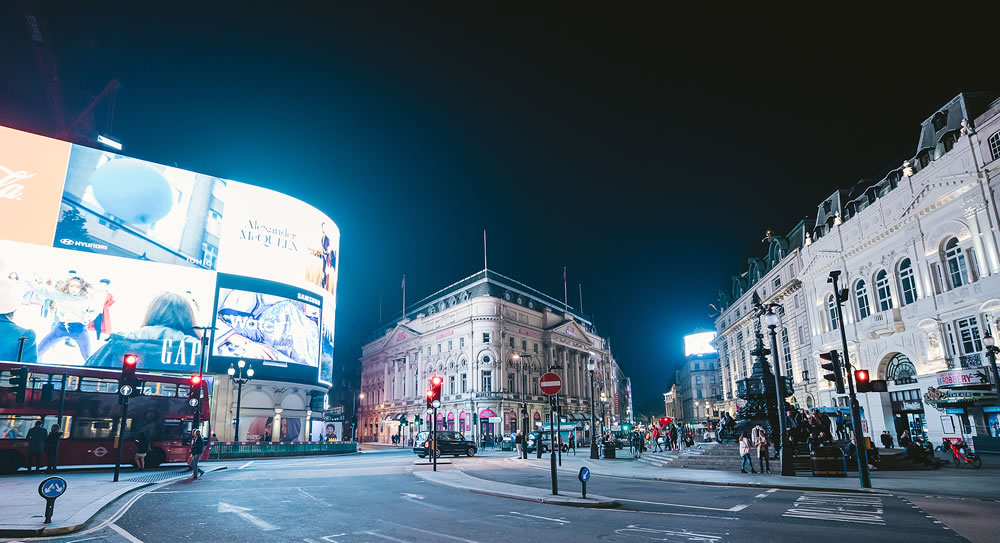
Piccadilly Circus, the gateway to London’s West End, has long been associated with video signage mounted on the corner of one of the capital’s busiest junctions. In fact, the first illuminated sign on Piccadilly Circus reportedly appeared in 1908, a single advertising sign promoting Perrier.
Nowadays, the video signage at the locale is known to be a tourist attraction in its own right, and the technology atop the building connecting Shaftesbury Avenue and Glasshouse Street was modernised in 2017. The current technology which powers the digital signage at Piccadilly Circus is made up of nearly 6000 individual LED tiles, with capacity to display over 200 trillion different colour types. Who even knew that many shades existed?
The technology is also reported to be able to track real-time data on temperature, mood, and the demographics of those in the eyeline of the video board – allowing its artificial intelligence to determine which advertisements should be run for greatest effect. Staggering.
Times Square, New York City
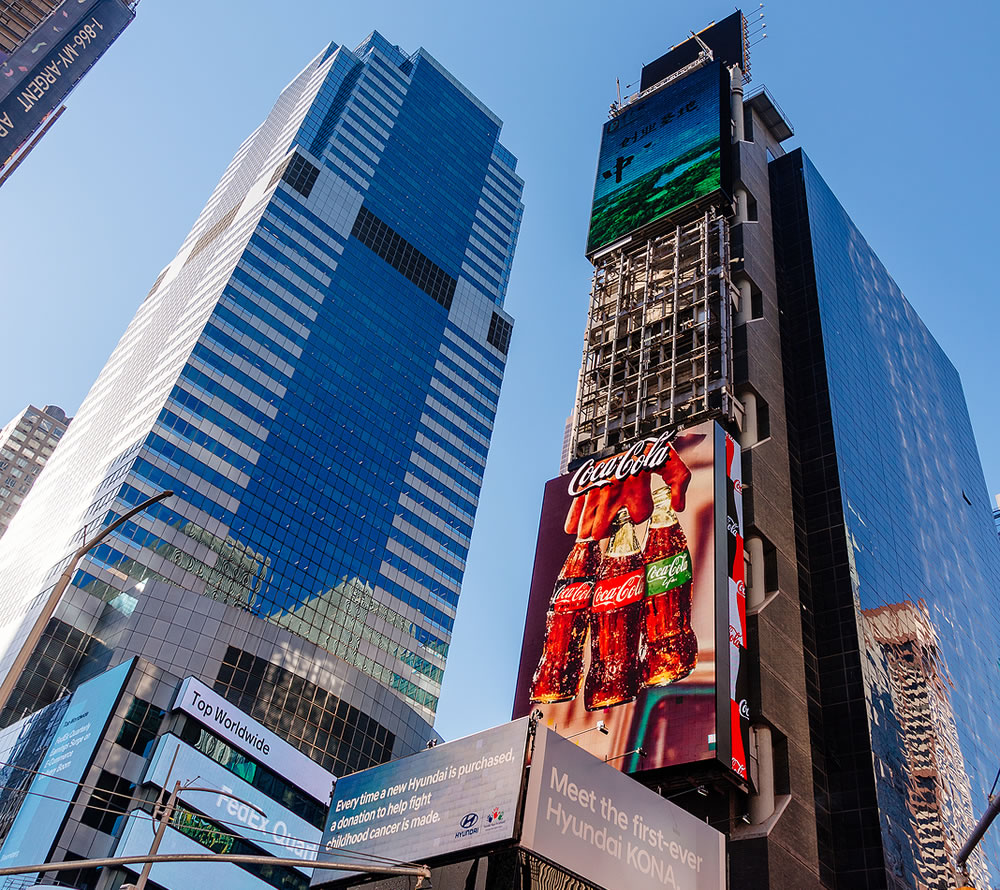
It would, of course, be remiss to list iconic uses of digital signage without mentioning Times Square, perhaps the best-known proponent of electronic advertising on Earth.
Located in midtown Manhattan, New York City, Times Square is often referred to colloquially as the centre of the universe. Arguably the world’s busiest pedestrian centre, Times Square is lit up like a Christmas tree 24/7, 365 days a year, with neon lights, billboards and electronic displays featuring premium advertising from some of the world’s biggest brands.
On a busy day, 500,000 people can pass through Times Square – which makes it a perfect breeding ground for awareness advertising.












